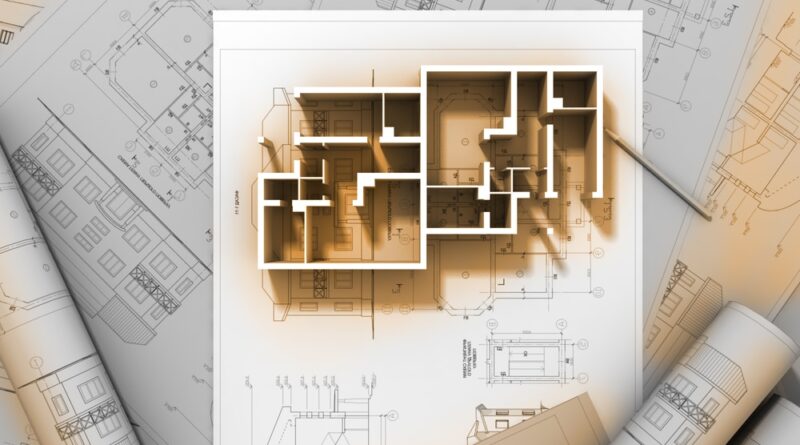From Blueprint to Reality: How to Navigate the Building Construction Process
Turning your blueprint into reality starts with mastering its details. You’ll need to understand every symbol and term to make informed decisions. Next, secure the necessary permits to ensure your project meets building codes; this step can’t be skipped or you’ll face fines. Picking the right team is crucial; don’t rush this process. Interview multiple contractors and ensure clear communication. During construction, stay involved—monitor quality, coordinate inspections, and manage the phases diligently. After completion, a final inspection will catch any imperfections. Addressing these promptly is vital for satisfaction. Each step is key to a successful build, and uncovering more will guide you in creating the structure you envision.
Understanding the Blueprint
Before diving into the physical construction, it’s crucial to grasp the blueprint and your roadmap through this complex process. Blueprints aren’t just drawings; they’re the language of your project’s vision. They detail every aspect, from dimensions to the placement of electrical outlets. Understanding them ensures you’re not just following steps but comprehending the journey.
It’s about visualizing the end before a single brick is laid. You’ll need to familiarize yourself with the symbols and terms used to communicate crucial information about materials, sizes, and techniques. This knowledge empowers you to make informed decisions and anticipate challenges.
Securing Necessary Permits
Once you’ve mastered the blueprint, securing the necessary permits to begin construction legally is crucial. This step ensures your project complies with local building codes, zoning laws, and other regulations. You must submit detailed plans and documents to the local government or building department for review. It’s essential to understand your area’s specific requirements, as they can vary significantly.
Start early, as the approval process can take time, potentially delaying your project’s start date. Don’t overlook this phase; without the right permits, you risk fines, legal issues, and the possibility of undoing construction work. It’s not just a formality; it’s a vital step in transforming your blueprint into reality.
Choosing the Right Team
Selecting a competent and reliable construction team like AH Construction is crucial for turning your architectural vision into a tangible structure. You’ve got to sift through myriad options, focusing on their experience, past projects, and client feedback.
Don’t just settle for the first team you come across. Instead, interview multiple contractors, asking detailed questions about their approach to challenges, timelines, and cost management. Look for a team that’s skilled, communicates clearly, and shares your project vision.
Managing Construction Phases
After securing the right construction team, it’s vital to understand and effectively manage the different phases your project will undergo. The process typically starts with site preparation, which involves land clearing and foundation work. You must maintain regular communication with your team to ensure timelines are met and no detail is overlooked.
As the project progresses into framing and structure, it’s your role to monitor the quality of materials and workmanship. This phase shapes your building, so it’s crucial.
Next, the focus shifts to installing electrical, plumbing, and HVAC systems – the veins and arteries of your building. Here, coordinating inspections and adhering to codes is key.
Final Inspection and Touch-Ups
As you approach the end of your construction San Diego project, it’s crucial to schedule a final inspection to ensure everything meets the required standards and address any necessary touch-ups. This step is your safeguard to catch minor issues before they become major headaches. You’ll walk through the site with your contractor, identifying imperfections or unfinished work. It’s your opportunity to ensure every detail aligns with your vision and contractual agreements.
Make a list of items that need attention and set a deadline for these to be completed. This isn’t the time for compromise; if something isn’t up to par, now’s when you insist on corrections. After adjustments are made, conduct a follow-up inspection to confirm all is as it should be. This diligence ensures your project’s success and your ultimate satisfaction.
Frequently Asked Questions
How Can I Ensure the Sustainability of My Building Project From Conception to Completion?
To ensure the sustainability of your building project, start with eco-friendly materials, incorporate energy-efficient designs, and regularly consult with sustainability experts throughout the process.
It’s about making conscious choices from start to finish.
What are the common pitfalls when integrating smart technology systems into new construction?
You’ll find that common pitfalls include:
- Overlooking compatibility between devices
- Underestimating the need for future upgrades
- Neglecting user-friendly interfaces
Always plan for scalability and ensure all components work seamlessly together.
How Can I Effectively Budget for Unforeseen Costs and Delays During the Construction Process?
You’ll want to set aside a contingency fund to budget for unforeseen costs and delays effectively. This fund is usually 10-20% of your total budget and is designed to cover unexpected expenses without stretching your finances too thin.
What Are the Best Practices for Maintaining Communication and Transparency With Neighbors Affected by the Construction?
To maintain good communication with neighbors during construction, you’ll want to keep them informed about timelines and potential disruptions.
Holding regular meetings and providing updates can help manage expectations and maintain transparency.
How Does the Choice of Building Materials Impact the Long-Term Maintenance Costs and Environmental Footprint of the Building?
Your choice of building materials significantly affects the building’s long-term maintenance costs and environmental footprint.
Sustainable materials may cost more upfront but often lead to savings and a smaller carbon footprint over time.
Conclusion
You’ve now navigated from blueprint to reality, understanding every step of the building construction process. By securing the right permits, choosing a dedicated team, and managing each construction phase, you’ve brought your vision to life.
Remember, the final inspection and touch-ups ensure everything’s up to standard. Congratulations on this journey! Moving forward, you’ll find that the effort and attention to detail you’ve invested will pay off in a truly your own space.


Your comment is awaiting moderation.
гѓ—гѓ¬гѓ‰гѓ‹гѓі еЂ¤ж®µ – г‚ўг‚ёг‚№гѓгѓћг‚¤г‚·гѓійЂљиІ©гЃЉгЃ™гЃ™г‚Ѓ жЈи¦Џе“Ѓг‚ёг‚№гѓгѓћгѓѓг‚ЇйЊ гЃ®жЈгЃ—い処方